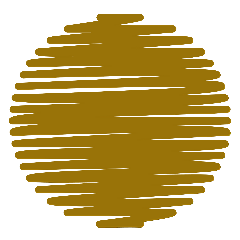SEO Glossary
SEO Glossary: Your Comprehensive Guide to Search Engine Optimization Terms
Welcome to our SEO Glossary, the ultimate resource designed to demystify the complex world of Search Engine Optimization. Whether you're a digital marketing professional, a website owner looking to improve your site's visibility, or simply curious about SEO, this glossary is tailored for you.
SEO is an ever-evolving field, rich with specific terminology and acronyms that can be overwhelming for both newcomers and seasoned professionals. Understanding these terms is essential not only for implementing effective SEO strategies but also for navigating the digital marketing space with confidence.
Our glossary encompasses a wide range of terms, from foundational concepts like "Keywords" and "Backlinks" to more advanced topics such as "E-A-T" (Expertise, Authoritativeness, Trustworthiness) and "Schema Markup." Each entry is carefully defined with clear, concise explanations, supplemented by practical examples to illustrate how these elements come into play in real-world SEO scenarios.
Beyond definitions, our SEO Glossary also includes tips, best practices, and insights into how search engine algorithms operate. This knowledge will empower you to optimize your website, enhance your online presence, and achieve better search engine rankings.
This resource is continuously updated to reflect the latest trends, algorithm updates, and best practices in SEO. We strive to make this glossary not just informative but also accessible, helping you to stay informed and ahead in the dynamic landscape of search engine optimization.
Dive into our SEO Glossary today and unlock the potential of your online content. Whether you're looking to enhance your SEO knowledge from scratch or seeking specific information, this comprehensive guide is your go-to source for all things SEO.
Glossaries
| Term | Definition |
|---|---|
| Zombie pages | Outdated or irrelevant pages still indexed by search engines, potentially harming your website's performance. |
| Yoast SEO | A popular plugin for optimizing WordPress websites for search engines. |
| XML namespace | Used to define the elements and attributes within an XML document for search engines to understand its structure. |
| Website audit | |
| Vertical search | Search engines focused on specific niches (e.g., travel, news). |
| User intent | Understanding what users are trying to achieve with their search queries. |
| Topical content | Content relevant to current trends and popular searches. |
| SERP | SERP (Search Engine Results Page) - the page of search engine results, most commonly featuring your desired search term, ranks on the first pages of various search systems (e.g., Google, Bing, Yandex, Yahoo...) |
| SEO | |
| Search Systems | popular search systems include: Google, Bing, Yahoo, Yandex, Baidu, CC Search, DuckDuckGo, Search Encrypt, Wiki.com |
| RankBrain | Google's machine learning algorithm used to understand search intent and rank websites. |
| Query | The exact string of words a user types into a search engine. |
| Panda and Penguin updates | Major Google algorithm updates targeting low-quality content and spammy link-building practices. |
| Off-page SEO | Off-page SEO refers to activities conducted outside of your website to increase its ranking on Search Engine Results Pages (SERPs). In conjunction with on-page SEO, this encompasses several key factors that help your site rank better. An example of off-page SEO is backlinks, which are links to your site from other websites. |
| No follow link | A "no-follow" link is a type of hyperlink that is not considered by search engines as a page endorsement. This means that it does not contribute to the page's ranking and does not (or hardly) influence its ranking on Search Engine Results Pages (SERPs). No-follow links are typically used when you do not want to pass on ranking to the linked page. Generally, "follow" links are more commonly used. |
| Multi-channel SEO | Optimizing your website and online presence across various channels. |
| Latent semantic indexing (LSI) | Understanding the context and meaning of your content beyond just keywords. |
| Keyword mapping | Matching keywords to specific web pages on your website. |
| Jump links | Links within a page that take users to specific sections. |
| Information architecture | Organizing and structuring website content for optimal user experience and SEO. |
| Head keyword | A broad, high-volume search term with lower competition, often used to target general topics. |
| Google Sandbox |  The Sandbox effect (or sandboxing) is a theory about the way Google ranks web pages in its index. It is the subject of much debate—its existence has been written about since 2004, but not confirmed, with several statements to the contrary. |
| Follow link | A "follow link" is a type of hyperlink that represents regular links within a website. They are considered by search engines in page ranking. For example, if you have 100 follow links on your site and your competitor has 100 no-follow links on their site on the same websites, in different search engines, your site will have a significant advantage when it comes to ranking on Google, Yahoo, and other search engines during search queries. |
| Evergreen content | Content that remains relevant and valuable for SEO over time. |
| Domain Authority | Synonyms - DA |
| Crawlability | How easily search engines can access and index your website content. |
| Core Web Vitals | A set of metrics established by Google to measure the real-world user experience of a web page. They focus on three key aspects of a user's experience: loading speed, responsiveness, and visual stability. By optimizing your website for these Core Web Vitals, you can ensure a smooth and frustration-free experience for your visitors, which can also lead to better search engine ranking. |
| Bounce rate | The percentage of visitors who leave a page after viewing it. |
| Alt text | Descriptive text added to images for accessibility and SEO. |



